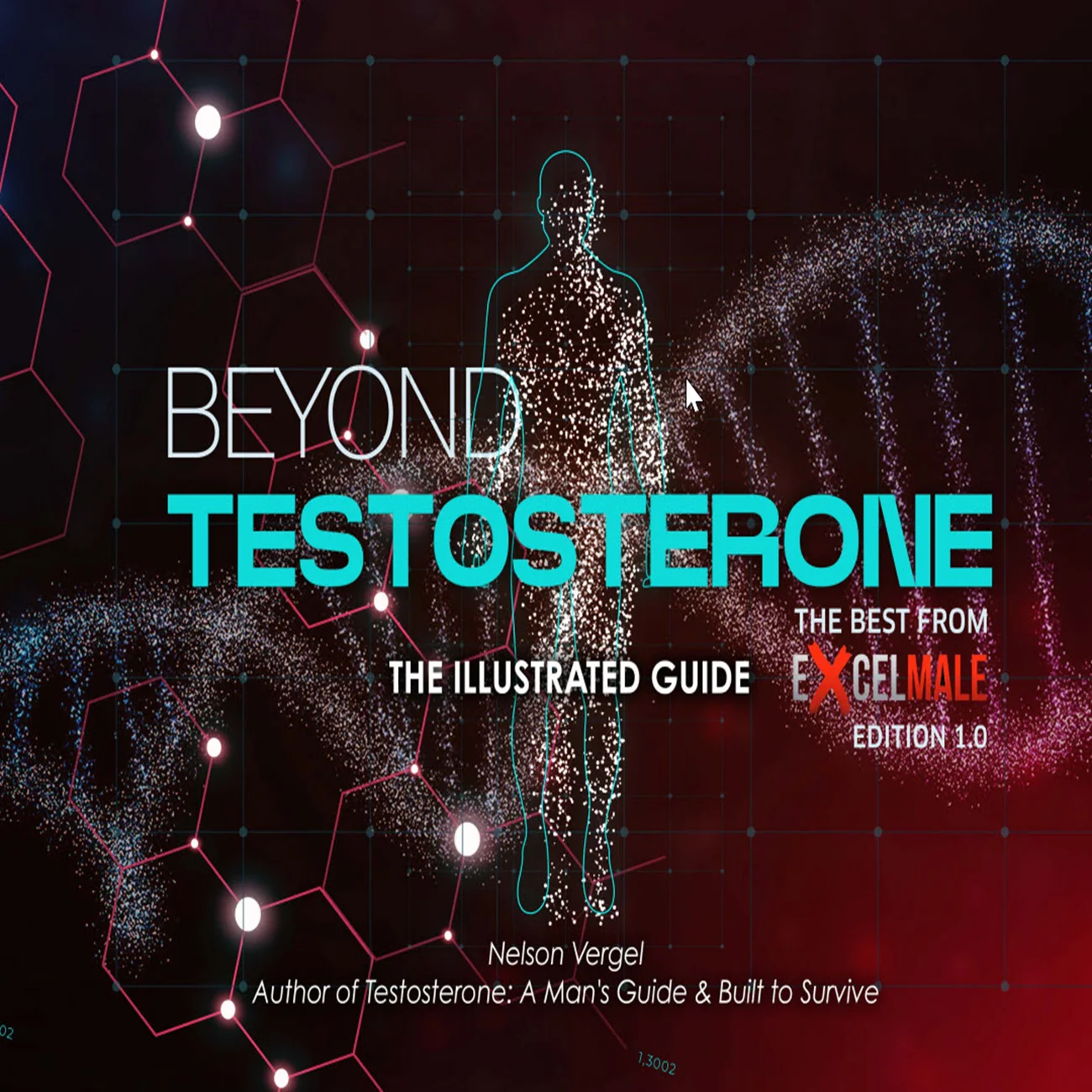38M who has been on TRT + HCG for ~5 years or so. I wanted to see if I could restart production with the help of enclomiphene, as prior to TRT I had a great response to clomid but could not handle the estrogen related sides.
I started 12.5mg ED about a month ago, and just got back labs from a week ago and am clearly still shutdown:
T - 25 (264-916)
LH - 1.3 (1.7-8.6)
E2, Sens - 3.4 (8.0-35)
If this restart was to be successful, how long should it take from the perspective of waiting for that last drop of synthetic T to go out of my system? Is it too early, or does this mean it won't work?
On the bright side, I've lost 10 lbs since starting (not muscle - my app says primarily fat and water) and am less moody and not as hot and sweaty all the time. Bad part is my libido is completely gone (and what makes that worse how little I care about it being gone).
________________________________________________________

I started 12.5mg ED about a month ago, and just got back labs from a week ago and am clearly still shutdown:
T - 25 (264-916)
LH - 1.3 (1.7-8.6)
E2, Sens - 3.4 (8.0-35)
If this restart was to be successful, how long should it take from the perspective of waiting for that last drop of synthetic T to go out of my system? Is it too early, or does this mean it won't work?
On the bright side, I've lost 10 lbs since starting (not muscle - my app says primarily fat and water) and am less moody and not as hot and sweaty all the time. Bad part is my libido is completely gone (and what makes that worse how little I care about it being gone).
________________________________________________________
Enclomiphene Restart: A User's Journey and General Considerations for HPTA Recovery
This briefing summarizes a detailed user experience and general information regarding the use of enclomiphene for restarting natural testosterone production after a period of Testosterone Replacement Therapy (TRT). The primary source is a forum thread from "Excel Male TRT Forum" titled "Enclomiphene restart - how long?".Key Themes and Most Important Ideas/Facts:
1. The Challenge of HPTA Restart Post-TRT:
The central theme is the difficulty and duration of restarting the Hypothalamic-Pituitary-Testicular Axis (HPTA) after long-term TRT. The user "GeauxBears" was on TRT + HCG for approximately 5 years and sought to restart natural production using enclomiphene. Initial lab results clearly showed a "shutdown" HPTA with very low Testosterone (T - 25 ng/dL, normal range 264-916 ng/dL) and LH (1.3 mIU/mL, normal range 1.7-8.6 mIU/mL) after about a month on enclomiphene.2. Timeframe for HPTA Recovery with Enclomiphene:
Restarting the HPTA is not an immediate process. Super Moderator "Seagalmadman" advises giving it "more time (3-6 months)." This is supported by general conclusions cited in the forum:- "About one in every four patients respond to a CC short trial to 'reboot' the HPT axis physiology."
- "In men prescribed CC for fertility optimization, we observed a maximal improvement in TT at 6 months, followed by a plateau."
- "6 months of CC may be needed to achieve maximal benefit in TT while 9 months may be necessary to observe statistical benefit in sperm concentration."
3. Patient Experience During Restart (GeauxBears' Journey):
GeauxBears' experience highlights the significant side effects and challenges during the initial months of attempting a restart:- Initial shutdown: After one month on 12.5mg enclomiphene daily, T was 25 ng/dL, LH 1.3 mIU/mL, and E2 (estradiol) 3.4 pg/mL (normal 8.0-35 pg/mL).
- Worsening symptoms (Month 2-3): After doubling the dose to 25mg enclomiphene daily, labs remained essentially the same (T - 30 ng/dL, LH - 2.5 mIU/mL). Symptoms included:
- Being "cold 95% of the time, until I have a hot flash which lasts 2-3 minutes."
- "Zero libido."
- Inability to achieve erections.
- "Some depression... taking hold."
- "Insulin resistance has exploded."
- Ironically, "testicles are larger than they were on TRT+HCG" and "lost a lot of water weight."
- Signs of recovery (Month 3-4):Mid-March (approx. 1 month after dose increase): T increased to 242 ng/dL, FT 4.4 pg/mL. Still experienced "near-constant swings in body temperature" and "zero libido," but noted subjective improvement and less frequent hot flashes.
- Late March (approx. 1.5 months after dose increase): T further increased to 415 ng/dL, FT 8.5 pg/mL, and LH significantly improved to 7.3 mIU/mL. Libido "slowly began coming back in waves" and hot flashes were "much less prevalent."
- Early May (approx. 3 months after dose increase): T reached 700 ng/dL, FT 10.5 ng/dL. This shows a gradual, albeit difficult, improvement over several months.
4. Important Considerations for Restart:
- HCG and Restart: "Vince" (Super Moderator) explicitly states, "Don't use HCG with a restart," as it is HPTA suppressive.
- Insulin Resistance and LH: "Systemlord" suggests that "Your insulin resistance is preventing your pituitary from creating more LH and is affecting your testicles production of testosterone." They also link low testosterone to an increased chance of type 2 diabetes.
- Diet and Thyroid: "sammmy" suggests that "Being cold most of the time suggests suppressed thyroid - this may be related to your low carb diet and intermittent fasting." They recommend increasing carb intake and ensuring sufficient calories.
- Enclomiphene Dosing: GeauxBears started at 12.5mg ED and then doubled to 25mg ED. By May, they were still on 25mg daily, hoping to "dial back over time."
- SHBG Changes: GeauxBears observed low SHBG on TRT but higher SHBG on enclomiphene/clomid. "Cataceous" explains that "Androgens tend to lower SHBG while estrogens tend to raise it. TRT, particularly with injections, can result in unnaturally high levels of testosterone. This is what lowers SHBG. Clinical trials suggest that enclomiphene alone does not have much effect on SHBG. So basically your SHBG is bouncing back to a less suppressed state. Clomid contains zuclomiphene in addition to enclomiphene. Zuclomiphene is estrogenic, and consequently helps to raise SHBG."
- LH Pulsatility: "Cataceous" reminds users that "LH is pulsatile, so don't worry too much if you have lower values in the future. Seeing a reading of 7.3 mIU/mL, even at a peak, is good news."
5. Alternatives and Less Painful Restart Strategies:
"Cataceous" suggests alternatives to a "cold turkey" restart to minimize the period of very low testosterone:- Switching to faster-acting, less suppressive testosterone: "The idea is to switch to a faster-acting form of testosterone that is less suppressive of HPTA function. The restart may take longer, but you don't have to endure a period of very low testosterone."
- Oral testosterone with enclomiphene.
- Testosterone nasal gel (e.g., Natesto) with or without enclomiphene.
- Speculation: "The combination of enclomiphene and cistanche extract may be able to restart the HPTA even with conventional TRT. However, this idea is untested."
6. Anecdotal Success Stories and Failures:
- Failed restart: "TLR" recounts a 4-month doctor-supervised Clomid restart where his LH/FSH response was good, but his "balls are dead" and TT never exceeded 330 ng/dL. This highlights that restarts don't always work, even with pituitary stimulation.
- Successful cold-turkey restart (anecdotal): "TLR" shares a story of a 55-year-old friend on TRT for over ten years who quit "COLD TURKEY." After feeling "like shit for about 6 months," his total T became 590 ng/dL, and he felt fine, also incorporating carnivore diet and intermittent fasting. This suggests that some individuals, even after long-term TRT, can achieve natural recovery.
Conclusion:
Restarting natural testosterone production after long-term TRT, particularly with enclomiphene, is a lengthy and often challenging process, frequently accompanied by significant temporary side effects like severe fatigue, mood changes, and loss of libido. While success is possible, as demonstrated by GeauxBears' eventual recovery of testosterone levels to 700 ng/dL after several months, it requires patience and close monitoring. Factors like insulin sensitivity and thyroid function may also play a role in the success of the restart. Alternative strategies exist to potentially mitigate the harsh withdrawal period.Q1: What is enclomiphene and why is it used for restarting natural testosterone production?
Enclomiphene is a selective estrogen receptor modulator (SERM) that is often used to stimulate the body's natural production of testosterone, particularly after a period of Testosterone Replacement Therapy (TRT) or to address hypogonadism. Unlike its isomer clomiphene (which contains both enclomiphene and zuclomiphene), enclomiphene is generally favored because it avoids the estrogenic side effects often associated with clomiphene, such as mood swings and hot flashes, due to the absence of the estrogenic zuclomiphene isomer. It works by blocking estrogen receptors in the hypothalamus and pituitary gland, which in turn signals the pituitary to increase the production of Luteinizing Hormone (LH) and Follicle-Stimulating Hormone (FSH). These hormones then stimulate the testes to produce more testosterone.Q2: How long does it typically take for enclomiphene to restart natural testosterone production, especially after prolonged TRT?
Restarting natural testosterone production with enclomiphene, especially after prolonged TRT (e.g., 5 years), can take a significant amount of time. Initial lab results might show continued shutdown of the HPTA (Hypothalamic-Pituitary-Testicular Axis), as seen with T and LH levels remaining very low even after a month of enclomiphene. Experts suggest giving it more time, typically 3-6 months, for the HPTA to fully "reboot." In some cases, a maximal improvement in total testosterone (TT) may be observed at 6 months, while sperm concentrations might take up to 9 months to show statistically significant improvement. The process can be challenging, with symptoms like extreme coldness, hot flashes, zero libido, and potential mood disturbances persisting for several months before a positive trend is observed.Q3: What are some common side effects experienced during an enclomiphene restart?
During the initial phase of an enclomiphene restart, especially after long-term TRT, individuals may experience significant and challenging side effects due to very low testosterone and estrogen levels. Common symptoms reported include:- Temperature dysregulation: Near-constant swings in body temperature, alternating between feeling very cold and suddenly getting very hot (hot flashes), which can disrupt sleep.
- Libido loss: Complete absence of sex drive, which can be psychologically distressing.
- Erectile dysfunction (ED): Inability to achieve erections.
- Mood disturbances: General depression and low mood scenarios.
- Insulin resistance: A noticeable increase in blood glucose levels and delayed response to insulin after meals, even in individuals without pre-existing type 2 diabetes.
- Physical changes: Loss of water weight, and ironically, in some cases, testicles becoming larger than they were on TRT+HCG.
Q4: Are there any dietary or lifestyle factors that can influence the success of an enclomiphene restart?
Yes, certain dietary and lifestyle factors can significantly influence the success of an enclomiphene restart. Insulin resistance, even if not diagnosed as Type 2 Diabetes, can inhibit the pituitary from producing enough LH, thereby affecting testosterone production. A very low-carb or carnivore diet, while potentially beneficial for managing insulin resistance or Type 2 Diabetes, might lead to suppressed thyroid function if calorie intake is insufficient, potentially contributing to symptoms like being constantly cold and depressed. Adequate caloric intake and a balanced diet with normal amounts of carbs are suggested to improve symptoms and aid the restart process.Q5: Can HCG be used during an enclomiphene restart?
No, HCG (Human Chorionic Gonadotropin) should generally not be used during an enclomiphene restart when the goal is to stimulate the body's natural testosterone production. While HCG can stimulate the testes directly, it is considered HPTA suppressive, meaning it can hinder the pituitary's ability to "reboot" and produce its own LH and FSH, which is precisely what enclomiphene aims to achieve. The primary objective of an enclomiphene restart is to restore the natural feedback loop, and adding HCG would counteract this process.Q6: What are potential alternatives or complementary strategies to make the restart process less challenging?
Stopping TRT "cold turkey" for a restart can be a very difficult experience due to severe low testosterone symptoms. Alternative strategies that might make the transition less painful include:- Switching to faster-acting testosterone forms: Using less suppressive forms of testosterone, such as oral testosterone or testosterone nasal gel (e.g., Natesto), in combination with enclomiphene. This approach aims to reduce the severity of low testosterone symptoms during the restart period, though the restart may take longer.
- Combinations with other compounds: Speculation exists that combining enclomiphene with certain extracts like cistanche might aid in restarting the HPTA, even while still on conventional TRT. However, this idea is largely untested.
Q7: How does enclomiphene affect Sex Hormone Binding Globulin (SHBG) levels compared to traditional TRT?
SHBG levels can fluctuate differently with TRT versus enclomiphene. Traditional TRT, particularly with injectable forms, often leads to unnaturally high testosterone levels, which tends to lower SHBG. In contrast, clinical trials suggest that enclomiphene alone does not have a significant effect on SHBG. When transitioning from TRT to enclomiphene, an individual's SHBG may bounce back to a less suppressed, potentially higher, state. This is also influenced by the fact that androgens tend to lower SHBG, while estrogens tend to raise it. Clomid, which contains both enclomiphene and the estrogenic zuclomiphene, can help raise SHBG due to zuclomiphene's estrogenic properties.Q8: What indicates a successful enclomiphene restart, and how long should treatment continue?
A successful enclomiphene restart is indicated by a progressive increase in testosterone (T) and Luteinizing Hormone (LH) levels into the normal range, accompanied by an improvement in symptoms like libido, body temperature regulation, and mood. For example, a significant rise in T from severely low levels (e.g., 25 ng/dL) to the normal range (e.g., 400-700 ng/dL) and LH levels accelerating into the normal range (e.g., 7.3 mIU/mL) are positive signs. The individual in the provided source initially took 12.5mg ED, then doubled it to 25mg daily to achieve these results. While it is hoped that the dosage can be dialed back over time, long-term chronic treatment with clomiphene citrate (CC), which shares similar mechanisms with enclomiphene, is often needed in most patients. Maximal benefits for total testosterone can take around 6 months, and for sperm concentration, up to 9 months.
Last edited by a moderator:












